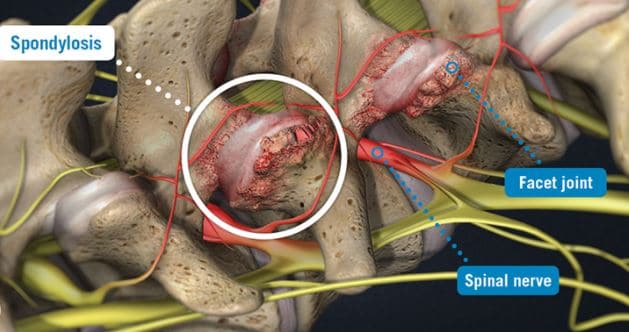We Are Spondylosis Experts
state of the art ultrasonic Spondylosis Treatment
What is Spondylosis ?
Before you begin researching the different types of spondylosis, it’s important to understand exactly what this term means. Spondylosis is a general medical term that is used to describe various forms of spinal degeneration that accompany the natural aging process. In some cases, physicians also use the term more specifically to describe the presence of spinal osteoarthritis or degenerative disc disease. You should ask your doctor about your specific type of spondylosis so you can begin understanding what may have caused your condition and the treatment options available to you.

What Are The Causes Of Spondylosis?
In most cases, spondylosis results from the cumulative effects of ongoing wear and tear on the spine. However, there are a number of risk factors that can increase your likelihood to develop spondylosis. These risk factors include obesity, genetic predisposition, a history of traumatic injuries and participation in high-impact sports.
Specifically, spondylosis occurs when the soft tissues in the spinal anatomy — the spinal discs, tendons, muscles, ligaments and cartilage that lines the facet joints — naturally deteriorate over time. For instance, the spinal discs, which are normally saturated with water, can become dehydrated and lose their effectiveness as cushions between the vertebrae. The cartilage in the facet joints can gradually wear away, resulting in bone-on-bone contact between the joints. This friction can cause inflammation and trigger the body’s natural protective responses, including the production of smooth bony deposits (bone spurs or osteophytes) in the affected areas. Additionally, the muscles that support the spine can weaken, while ligaments and tendons can thicken, tighten and stiffen.
Spondylosis is also used to refer specifically to spinal osteoarthritis, which is a common result of the natural aging process. Osteoarthritis is an age-related condition that is characterized by the deterioration of the cartilage that covers the joints in the body, including the spinal facet joints. These joints, which are located between the individual vertebrae, serve an important function in providing the spine with essential range of motion, allowing it to bend, twist and flex. The cartilage, a smooth, rubbery tissue that covers the ends of the bones in the joints, reduces friction and helps the bones to glide smoothly over each other. When the cartilage breaks down, painful joint damage can occur.
Some people experience more degenerative changes related to spondylosis than others, but most have at least some signs of spinal deterioration that are readily apparent in an X-ray, MRI or CT scan by the age of 40. These findings might include bulging or herniated discs, as well as bone spur formations or calcium deposits in the vertebrae affected by degeneration.
Am I the right patient for Spondylosis Treatment?
If you have spondylosis, call us about the SonoSpine Procedure.